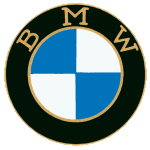The Bayerische Flugzeug Werke was established in Munich during 1916, as its name suggests to build aero engines, following the end of hostilities in 1918 and the sanctions imposed on Germany by the victors precluding the production of aircraft the company sought new commercial enterprises. Under the Bayerische Motoeren werks banner the firm introduced its first motorcycle using a proprietary engine that was also supplied to Helios and Victoria among others, however the firm were not impressed with the quality of the engine and employed their skills to develop an engine of their own. When displayed at the 1923 Paris show, the new model, typed the R32, introduced features that would characterise all of the companies large capacity machines for the next six decades, including unit construction, shaft final drive and horizontally opposed cylinders.
For the remainder of the decade BMW concentrated on refining the flat twin concept, with the R32 being joined by overhead valve examples. During this period BMW utilised twin loop frames constructed from pressed steel and front forks that employed a leaf spring, however in 1935 an innovative telescopic front fork design was introduced on a range of new machines. The long running R11 side valve 745cc was replaced by the R12 of similar displacement and the overhead valve R16 was supplanted at the head of the range by the 736cc R17, of which approximately 430 were built before production ended in 1937. The new models, equipped with the new fork retained the pressed steel frame and general configuration of their predecessors in all other respects.
The example offered is equipped with a single seat sidecar and presented in the traditional BMW black livery with white lining. It was originally registered in 1935 and was acquired by the vendor in 1979 subsequently forming part of his private collection housed in the Lake District.
Courtesy H&H Classic Auctions


